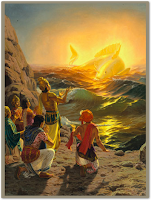Tamil Nadu and surrounding states have very unique customs which cannot be seen in other parts of India or world.
Saktham practice in Dhakshinacharam (right hand practice) means the feminine nature of everything is being worshiped. Especially seeing mother in everything. The divine mother sitting comfortably and happily can be seen only in this region.
Saktham is misunderstood as treating females as a sexual object by some people. (as in Vamacharam - left had practice - uses drugs, females, dead bodies, fishes and flour to achieve sidhdhis. But it is a fake. This causes more misery and stress in the world). One can get peace only by treating female as mother.
 Srividya, Sri Lalitha, RajaRajeshwari (made by Sidhdha - Tirumular), Kamakshi, Bhuvaneshwari and Angala parameshwari are some of the unique forms of mother who can be seen only in and around Tamil Nadu.
Srividya, Sri Lalitha, RajaRajeshwari (made by Sidhdha - Tirumular), Kamakshi, Bhuvaneshwari and Angala parameshwari are some of the unique forms of mother who can be seen only in and around Tamil Nadu.Normally Durga is seen with 10 hands. But a form of Durga also called as Ashta dasa buja Mahalakshmi can be seen only in Tamil Nadu.
Sarabeshwar who made Narasimha to calm down can be seen only here.
The story says after killing Hiranyakasibhu, Narasimha became wild because of the bad blood of the Rakshas.
The story says after killing Hiranyakasibhu, Narasimha became wild because of the bad blood of the Rakshas.
So Lord Shiva took the form of Sarabeswar and with the help of Prathiangira and Sulini durga, made Narasimha to calm down.
These statues cannot be seen in other parts of the world.
Even Narasimha and Varaha temples can be seen in southern India only.
Lord Vishnu in lying pose in temples can be seen in these area only.
Lord Vishnu in lying pose in temples can be seen in these area only.

To save from the bad eyes of others, unique Ganesha form, made by Rishi Agasthya can be seen only here.
This image of Ganesha takes off the evil eyes, can be seen in front of many houses of south India.
Rishi Agasthya is known as the creator of Tamil language and it is believed that he is there in Podhigai hills of Tamil Nadu even today.
Rishi Agasthya is also a Sidhdha (South Indian Rishis were called as Sidhdhar). Sidhdhar means one who has achieved the 8 sidhdhies. Many of these have traveled to Rome (Romarishi), China (Maha Bhogar) and California-USA (Kapila) and other parts of the world. They have spread the words of Sidhdha in those places.
Even there is a story that Nataraja statue was first came in the mind of a Pandya king and Maha Bhogar made it to a statue.
Also it is known that BhodhiSathva, the famous Buddhist monk of China is a Pallava king from Tamil Nadu.
Tamil daily calendar is very unique with a lot of details about thithi, star, good time and bad time, that day's planetary positions, some of the important activities in the temples, and other fasting details are given.
Whether the day is good for marriage or not. In which direction one should not travel that day. Also a good knowledge statement for the day are given.
Even the monthly calendars give most of these details. I wish such a calendar is available in the mobiles :-) so that we can know the uniqueness of that day immediately.
Panjangam is also a unique thing, which gives more details about Grahana, Powrnami and exact timing of fasting to be done, The exact time of festivals to be celebrated etc.
Regular Homas or yagnas happen here more than the other places. These have very high power to cure many diseases and purify the environment. This is done during marriage, house warming, first year completion of the child etc.
Also annadhana or providing food to all the people who visit the temples is followed in most of the temples.
Females put turmeric in their faces while taking bath. Lemon is widely used for worshiping the divine. Green pumpkin is used as a evil eye remover (drishti dosha nivarani). Lighting lamps in houses and in temples is much more than the other states. Salt and pepper are put in a particular place in temples.
Lord Karthikeya and Lord Iyappa (Hariharan) are unique Gods of these states. Even in Srimad Bhagavatha purana it is told that Bhakthi was born in Dravida desham (Tamil Nadu), grown up in Karnataka and became matured in Kurjaram (Gujarat).
Lot of varieties of flowers can be seen which are being offered to the divine. This is called as pushpa alankar and pushpa archanai.
People are matured that we are born in this world to dissolve our karma and we need to avoid increasing our sins which will delay the process of moksha or Mukthi. So one needs to bow down and celebrate the divine (sing about the divine, talk about the divine, dance about the divine, see the divine and surrendar to the divine), so that the mind does not get into unwanted activities.
Tamil Vaazhga!










































